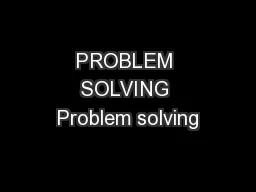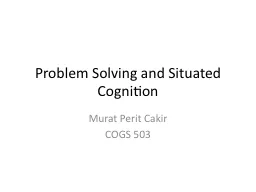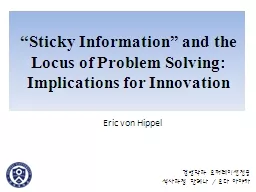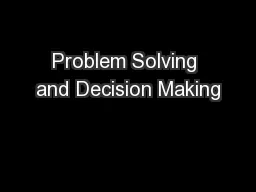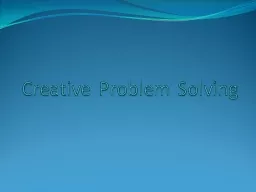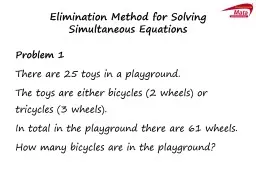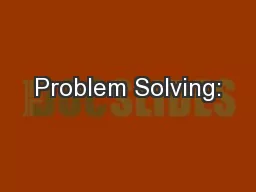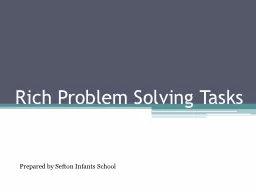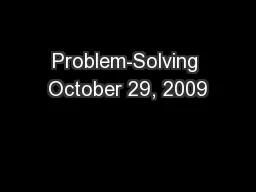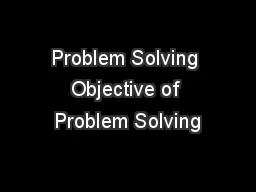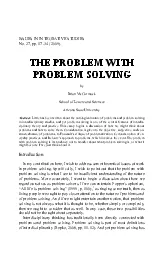PPT-PROBLEM SOLVING Problem solving
Author : karlyn-bohler | Published Date : 2018-03-22
active efforts to discover what must be done to achieve a goal that is not readily attainable TYPES OF PROBLEMS Problems of inducing structure relations among
Presentation Embed Code
Download Presentation
Download Presentation The PPT/PDF document "PROBLEM SOLVING Problem solving" is the property of its rightful owner. Permission is granted to download and print the materials on this website for personal, non-commercial use only, and to display it on your personal computer provided you do not modify the materials and that you retain all copyright notices contained in the materials. By downloading content from our website, you accept the terms of this agreement.
PROBLEM SOLVING Problem solving: Transcript
Download Rules Of Document
"PROBLEM SOLVING Problem solving"The content belongs to its owner. You may download and print it for personal use, without modification, and keep all copyright notices. By downloading, you agree to these terms.
Related Documents

